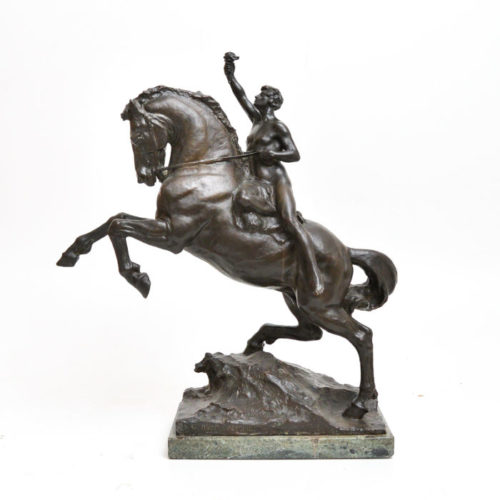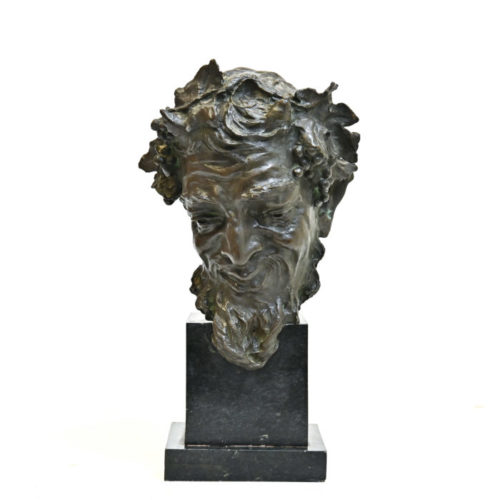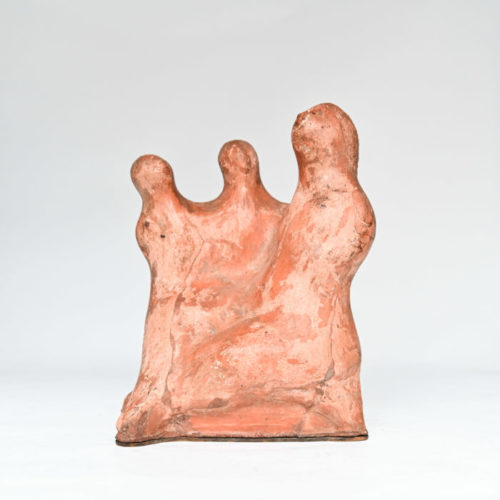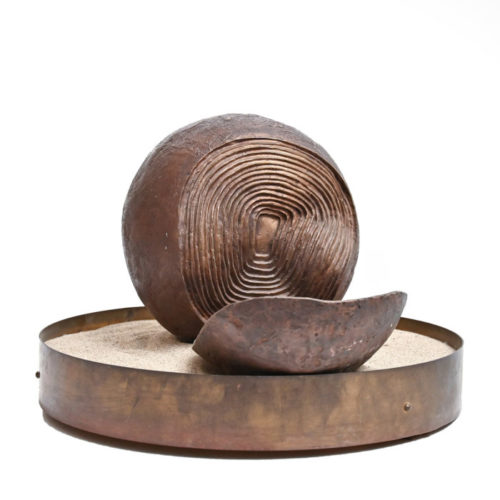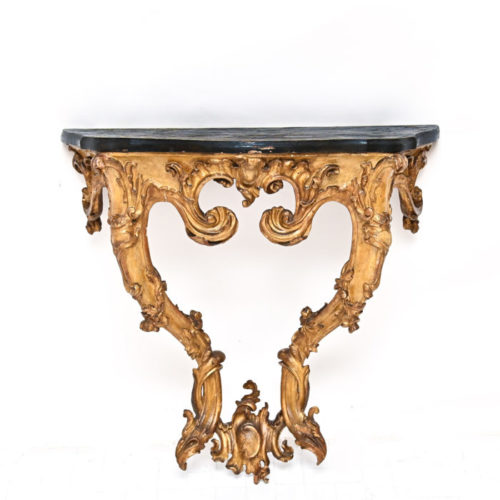Bronze sculpture by Giacomo Buzzi Reschini (Viggiù, 4 September 1881 - Turin, 18 September 1962) dating back to the early 1900s.
GIACOMO BUZZI RESCHINI The son of a marble craftsman, he went to Turin at a very young age to attend the Albertina Academy under the guidance of Luigi Belli first and then Leonardo Bistolf; however, he soon left school to open his own studio. In Turin he received awards and honors: in 1909 he made two medallions and presented the works "Non omnis moriar", "Vanaexpected", "Stella Alpina" (purchased by King Vittorio Emanuele III) at the Exhibition of Fine Arts, while in 1911 he received the gold medal for two equestrian groups. After the First World War, Buzzi Reschini resumed his activity by becoming friends with Canonica, Calandra, Bistolf, Pogliaghi and Enrico Butti, his fellow citizen. Buzzi Reschini was a brilliant artist: if his entire production is qualified by adhering to the romantic theme, liberty implications prevail in the works of the beginning of the century, while later he moved towards more sober and monumental forms, typical of the years of the "twentieth century". Of his vast production, we remember: "The Immaculate Conception" (1928), in travertine, with a height of 5 m, for the Palazzo del Governorato of the Vatican City; "Saints Cyril and Methodius" for the Bohemian College in Rome; "the War Memorial of Chieri" (1925), of Croce Mosso, of Bordighera, of San Damiano d’Asti (1927) and of Agliè; "the Four Prophets" (post 1930) for the facade of the church of the Annunciata in Turin, for which he also painted the Angels of the interior and the doors with Stories of the Virgin. "the Supreme Judgment" in the Monumental Cemetery of Milan, later destroyed in a bombing in 1943; "The last kiss" for the Monumental Cemetery of Vercelli; "The three Marys"," The Mass of the Dead"," Maternity"," S. Sebastiano"," La Pietà", "S. Francesco" for the Turin Cemetery; "The guards at the sepulcher" (1957). In the 1960s, next to the Butti Museum in Viggiù, he built a new pavilion with the intention of hosting his own plaster cast gallery and the plaster casts of other members of the Viggiutese sculpture of the twentieth century. His models are in fact set up in the central hall and in room II of the building.
